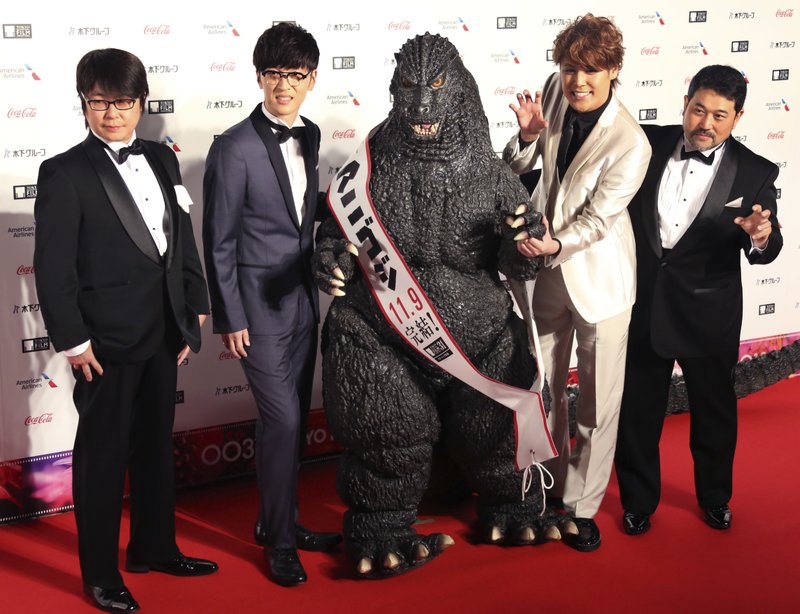Godzilla back as animation has human drama, fewer monsters
TOKYO: Godzilla is stomping back into theaters as a fire-breathing animated character, though the movie chosen to close this year’s Tokyo International Film Festival is more focused on human drama than the monsters that have made the franchise famous.
The two directors of “Godzilla: The Planet Eater” acknowledge that their film is so different it might turn off hard-core fans. But they say that’s an intentional attempt to reach out to new audiences.
“We welcome getting bashed by the traditionalists,” Hiroyuki Seshita, one of the directors, told The Associated Press last week. “That proves more than anything we succeeded in creating something different.”
A mutation caused by nuclear testing, the first Godzilla emerged from the ocean in a 1954 film directed by Ishiro Honda. Godzilla flattened much of Tokyo as crowds fled in terror, and went on to become an eternal symbol of human fallacy in the atomic age.
The latest film completes a three-part animated saga that began last year. It premiers Nov. 3, Godzilla’s official birthday, the date the first film was released.
Seshita and co-director Kobun Shizuno said that rather than simply transferring the well-known tale into a computer animation, they have focused on what they call Shakespearean “human drama.” They tackle complex issues, including the meaning of religion, in a futuristic post-apocalyptic universe.
While Godzilla still has its screech and menacingly gigantic shape, it hardly engages in battles with other monsters, a trademark of the mega-series from Toho Co.
“We kept all that is Godzilla-like — its design and how it’s portrayed on film. We have kept its essence,” said Seshita, who has served as art director of the “Final Fantasy” movies.
Although some viewers may find the story rather complicated, Seshita said the film chose to interpret the Godzilla saga as what he called “a kind of animism,” or a godlike force that is bigger than human existence, a perspective he said was integral to Japanese culture and storytelling.
The hero is a doe-eyed, rock-star-like Japanese man who is selflessly determined to reclaim planet Earth, which has been left in shambles from Godzilla’s havoc.
Humans have been relegated to wandering around in space, surviving in a gigantic spaceship that’s factory-like and sterile, unlike the lush greenness that was once home.
“I’m not a Godzilla expert and so I simply made a film I thought would be enjoyable,” said Shizuno, who has also directed the “G.I. Joe: Sigma 6″ and “Detective Conan” animation series.
Yet the film is scattered with tributes to Godzilla, according to the directors, who declined to disclose too many specifics. For one, the hero’s name is Haruo, the same as the actor Haruo Nakajima, who was inside the rubber Godzilla suit in the original 1954 film. Nakajima died last year.
Toho has made 29 Godzilla films, not counting the animation trilogy. The last work, released in 2016, used an actor skilled in traditional Japanese theater known as Kyogen, whose movements were interpreted into computer graphics that brought a terrifying Godzilla to life.
There are two Hollywood Godzilla films, the most recent in 2014. A third is promised for next year.
Ryota Fujitsu, an expert on Japanese animation, said the animated trilogy was commendable for its visual beauty, as well as for tackling Godzilla as a science fiction movie.
“So much has been tried in the long-running series that taking a new approach was inevitable,” he said, noting the work explores the dilemma between civilization and the individual. “This work is facing the Godzilla theme head-on.”
The first two films of the animated trilogy are available on Netflix.






